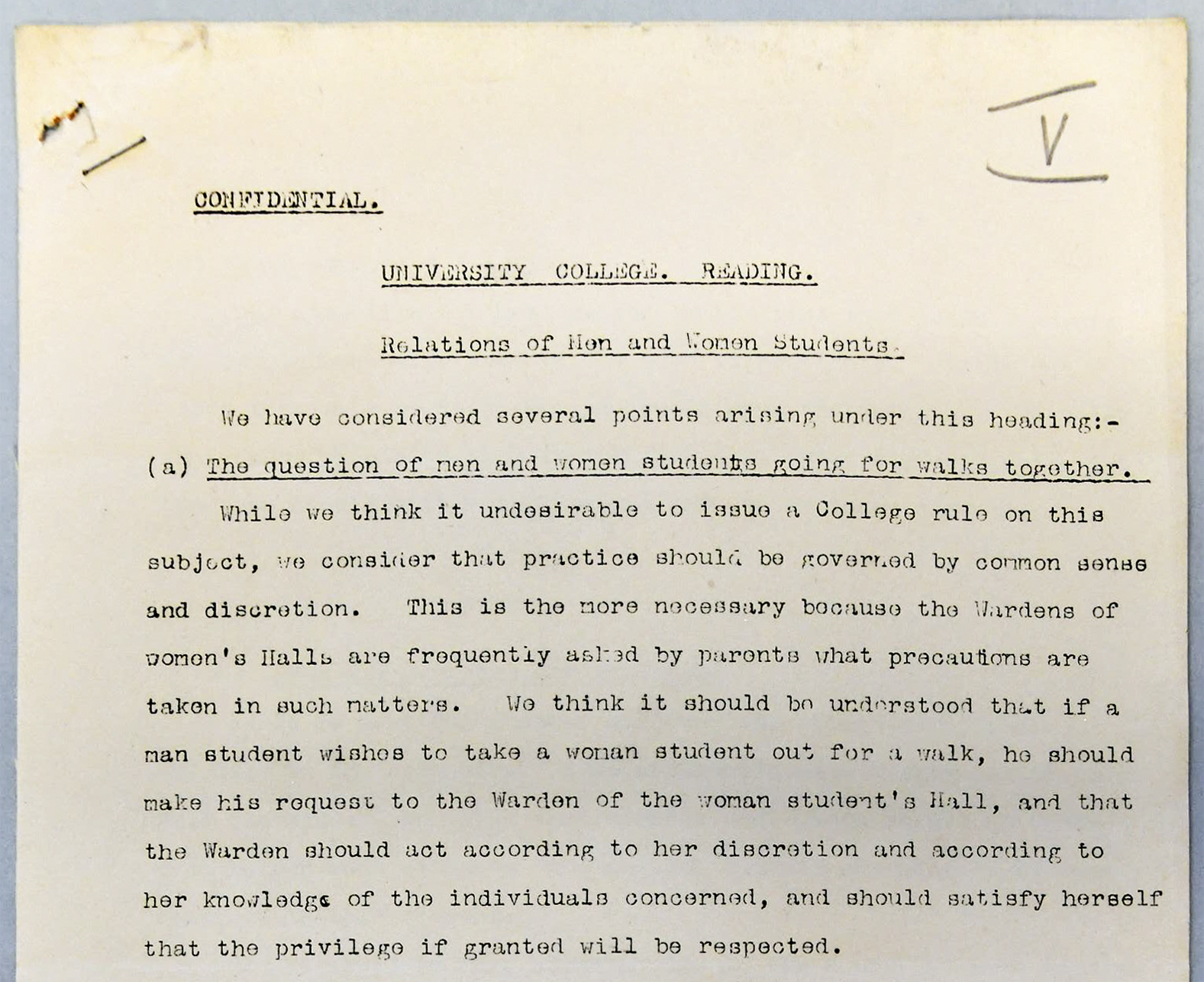‘Our attention has been called to the fact that women students are not infrequently seen in the town without hats. We do not think that this practice brings credit upon the college.’ (Committee Report, 1921).
I first came across this quotation in James Holt’s (1977) history of the first 50 years of the Reading University. It can be found in an appendix dealing with ‘Regulations for discipline and Hall rules’ (pp. 355-62). The extract is taken from the report of a Special Committee of the University College dated 16th March 1921, and is included under a section titled ‘Relations of Men and Women Students’. The report is marked ‘Confidential’.
Even after reading the original in full (see below) I don’t quite see the connection between wearing a hat and relations between the sexes. There is, however, much more obvious relevance in the other paragraphs:
-
- ‘The question of men and women students going for walks together’ (male students were expected to request permission from the woman student’s Hall Warden who would use her discretion).
- ‘The question of motorcycling excursions’ (no pillion passengers allowed; taking a female student on a sidecar excursion required consent from a parent or guardian as well as the Hall Warden).
- ‘River excursions’ (the committee recommended continuation of the custom that women students in Halls were banned from the river on Sundays).

Once the College had become a University the matter of hats raised its head again. In October 1926 the Vice-Chancellor, W. M. Childs, sent a private memo to the Hall Wardens reminding them of the requirement that women students were expected to wear caps as well as gowns within the University and as they went to and from the campus:
‘I notice that a large number of students … do wear their caps as well as their gowns, but there are quite a number of women students who do not. It is most desirable that all women students should wear the cap as a matter of course.’
Nevertheless, Childs opted for a softly, softly approach, asking the Wardens to ‘gently remind’ the students without mentioning his intervention.

With all the things that Vice-Chancellors have to worry about nowadays, I doubt whether many of them lose sleep over what students have on their heads. In 1926, however, the University of Reading was in its infancy; I suppose impressions were all important.
Sources
Holt, J. C. (1977). The University of Reading: the first fifty years. Reading: University of Reading Press.
University of Reading Special Collections. Papers concerning women students and rules and regulations. Temporary Reference: AA-SAS 1917-1936.

Many of these posts raise the eyebrows of modern readers. Some, however, lead to hearty guffaws. This last post falls in this category!